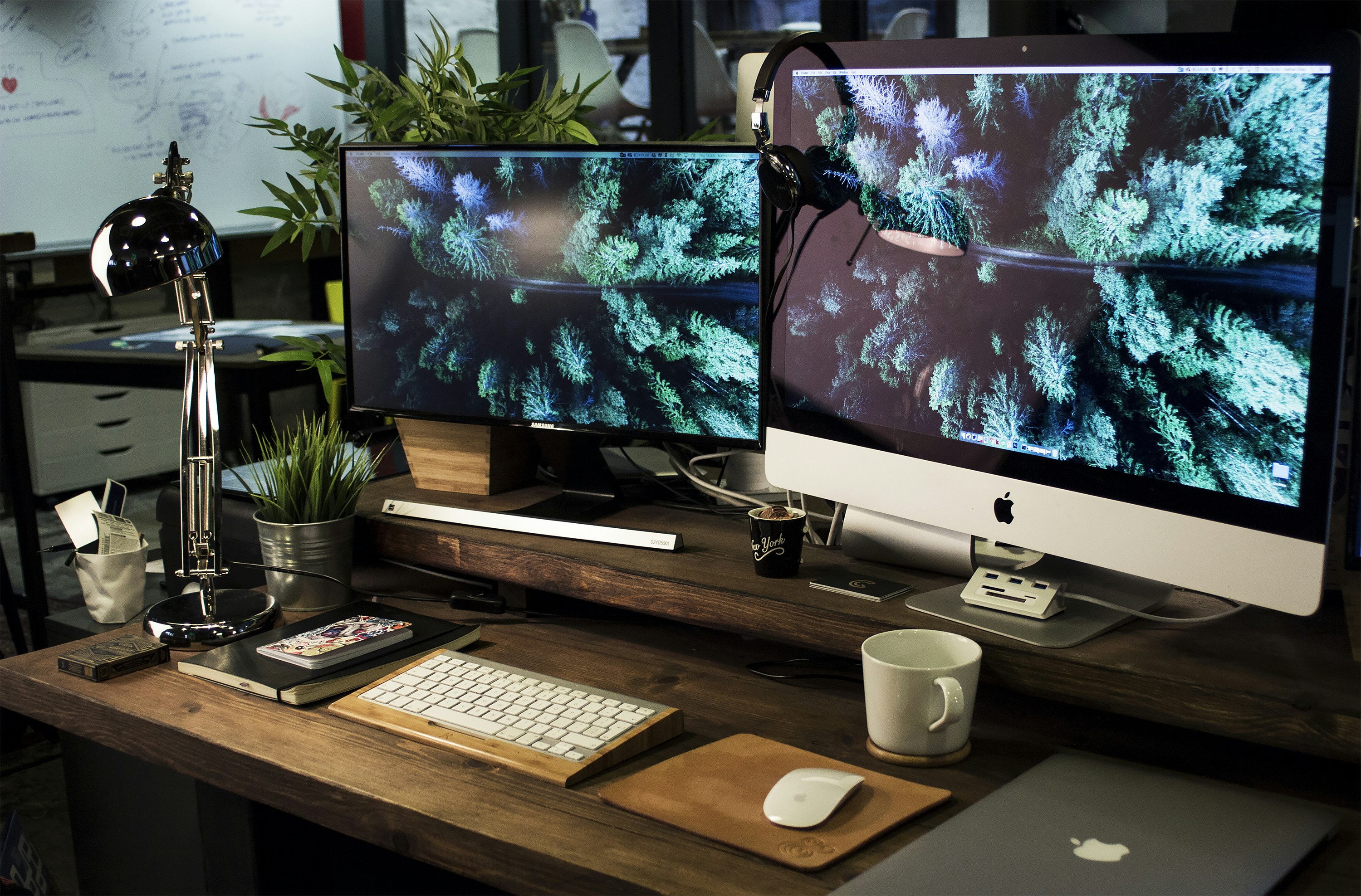
This article contains affiliate links. If you buy something through one of these links, we may earn a commission.
Managing multiple windows on macOS can become challenging, especially when juggling various projects simultaneously. Fortunately, macOS provides several built-in features, and there are third-party tools available to streamline window management. This guide will walk you through organizing windows on macOS, using window tiling, and saving and restoring window positions and desktops.
Window Management in macOS
macOS offers built-in functionalities like Mission Control and Spaces to enhance window management.
Mission Control
Mission Control gives a bird’s-eye view of all open windows, desktop spaces, and full-screen apps. Activate it by swiping up with three or four fingers on your trackpad, pressing Control + Up on your keyboard, or using the Mission Control key (F3) on your Mac keyboard. Once in Mission Control, you can rearrange windows, create new spaces, and switch between them.
Spaces
Spaces are virtual desktops that help categorize your open applications and windows. To create a new Space, activate Mission Control, hover your cursor over the top right corner, and click the + button that appears.
Switch between Spaces by swiping right or left with three or four fingers on your trackpad or using Control + Right or Control + Left on your keyboard.
Split View
Split View lets you work with two apps side by side, eliminating distractions. To use it, click and hold the full-screen button (green dot) in a window’s upper-left corner and drag it to one side of your screen. To exit, hover your cursor at the screen’s top to reveal window buttons and click the full-screen button.
Window Tiling
Starting with macOS Catalina, Apple introduced Window Tiling, enabling users to neatly arrange windows in a grid, dividing the screen into halves.
- Hover over the green maximization button on a window’s top left.
- A menu will appear with tiling options.
- Choose to tile the window to the screen’s left or right half.
Saving and Restoring Window Positions and Desktops
macOS’s Resume system remembers your open windows and apps, allowing you to continue where you left off after a restart or app relaunch.
- To enable the Resume feature, navigate to “System Preferences > Desktop & Dock”.
- Uncheck “Close windows when quitting an application.”
- With this option unchecked, macOS recalls the positions and states of windows for each app upon reopening.
Restoring Desktops
To restore your desktop state after a restart:
- When shutting down or restarting, a popup will offer the option
Reopen windows when logging back in. - Check this box before confirming the shutdown or restart.
- macOS will then restore all your open apps and Spaces.
By leveraging these methods, you can efficiently manage and organize your macOS windows, boosting productivity and simplifying multitasking.
Using Third-Party Tools for Window Management
For enhanced window organization, third-party tools like Magnet, Moom, and Stay offer features like precise window sizing, saved window layouts, and window positioning shortcuts.
Magnet
Magnet is a macOS window manager that boosts multitasking efficiency.
- Snap windows by dragging them to screen edges or corners or use customizable keyboard shortcuts.
- Move windows between displays or maximize them by dragging to the screen’s top.
Moom
Moom is a versatile window management tool that offers:
- Easy window moving and zooming to half screen, quarter screen, or full screen.
- Customizable keyboard shortcuts for quick window resizing and positioning.
- A “hover over the green button” feature that presents a palette of preset window sizes and positions.
- The ability to save custom window layouts and restore them with a single click or keyboard shortcut.
- Integration with macOS’s full-screen app mode, allowing for quick transitions between full screen and custom window sizes.
Stay
Stay ensures that your windows remain in your preferred positions, even as you open and close applications or change display configurations.
- Remembers window positions for applications and restores them automatically.
- Store window positions for specific display configurations and restore them manually or automatically.
- Especially useful for users with multiple displays.